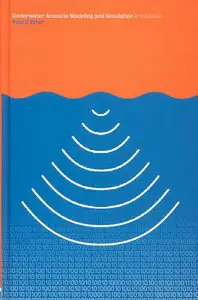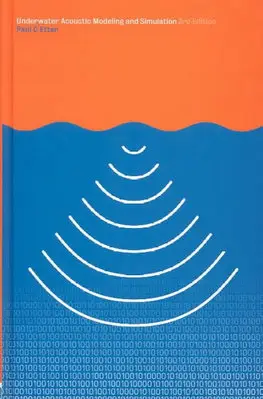"Underwater Acoustic Modelling and Simulation" by Paul C. Etter
Third Edition
Spon Press, Taylor & Francis Group | 2003 | ISBN: 0203419103 0419262202 9780419262206 9780203419106 | 447 pages | PDF | 5 MB
Third Edition
Spon Press, Taylor & Francis Group | 2003 | ISBN: 0203419103 0419262202 9780419262206 9780203419106 | 447 pages | PDF | 5 MB
This book examines the translation of our physical understanding of sound into mathematical models that can simulate acoustic propagation, noise and reverberation in the sea. The book provides useful guidance to systems engineers and operations analysts interested in simulating sonar performance.
The book have provided invaluable guidance to sonar technologists, acoustical oceanographers and applied mathematicians in the selection and application of underwater acoustic models.
Guidelines for selecting and using available propagation, noise and reverberation models are highlighted. Specific examples of each type of model are discussed to illustrate model formulations, assumptions and algorithm efficiency. Instructive case studies demonstrate applications in sonar simulation.
Contents
Preface
Preface to the second edition
Preface to the first edition
Acknowledgments
1 Introduction
1.1 Background
1.2 Measurements and prediction
1.3 Developments in modeling
1.4 Advances in simulation
1.5 Operational challenges
1.6 Inverse acoustic sensing of the oceans
1.7 Standard definitions
2 Acoustical oceanography
2.1 Background
2.2 Physical and chemical properties
2.3 Sound speed
2.4 Boundaries
2.5 Dynamic features
2.6 Biologies
3 Propagation I: observations and physical models
3.1 Background
3.2 Nature of measurements
3.3 Basic concepts
3.4 Sea-surface boundary
3.5 Sea-floor boundary
3.6 Attenuation and absorption in sea water
3.7 Surface ducts
3.8 Deep-sound channel
3.9 Convergence zones
3.10 Reliable acoustic path
3.11 Shallow-water ducts
3.12 Arctic half-channel
3.13 Coherence
4 Propagation II: mathematical models (Part One)
4.1 Background
4.2 Theoretical basis for propagation modeling
4.3 Ray-theory models
4.4 Norma I-mode models
4.5 Multipath expansion models
4.6 Fast-field models
4.7 Parabolic equation models
4.8 The RAYMODE model a specific example
4.9 Numerical model summaries
5 Propagation II: mathematical models (Part Two)
5.1 Background
5.2 Surface duct models
5.3 Shallow-water duct models
5.4 Arctic models
5.5 Data support requirements
5.6 Special applications and inverse techniques
6 Noise I: observations and physical models
6.1 Background
6.2 Noise sources and spectra
6.3 Depth dependence
6.4 Directionality
6.5 Arctic ambient noise
6.6 Acoustic daylight
6.7 Geoacoustic inversion
7 Noise II: mathematical models
7.1 Background
7.2 Theoretical basis for noise modeling
7.3 Ambient-noise models
7.4 The RANDI model a specific example
7.5 The noise notch
7.6 Beam-noise statistics models
7.7 Data support requirements
7.8 Numerical model summaries
8 Reverberation I: observations and physical models
8.1 Background
8.2 Volume reverberation
8.3 Boundary reverberation
8.4 Inversion techniques
9 Reverberation II: mathematical models
9.1 Background
9.2 Theoretical basis for reverberation modeling
9.3 Cell-scattering models
9.4 The REVMOD model a specific example
9.5 Bistatic reverberation
9.6 Point-scattering models
9.7 Numerical model summaries
10 Sonar performance models
10.1 Background
10.2 Sonar equations
10.3 The NISSM model a specific example
10.4 Model operating systems
10.5 Data sources and availability
10.6 Numerical model summaries
11 Model evaluation
11.1 Background
11.2 Past evaluation efforts
11.3 Analytical benchmark solutions
11.4 Quantitative accuracy assessments
11.5 The POSSM experience a specific example
11.6 Evaluation guidelines
11.7 Documentation standards
12 Simulation
12.1 Background
12.2 Hierarchical levels
12.3 Simulation infrastructure
12.4 High-level architecture
12.5 Testbeds
12.6 Applications
Appendix A: Abbreviations and acronyms
Appendix B: Glossary of terms
Appendix C: Websites
References
Author index
Subject index
with TOC BookMarkLinks



